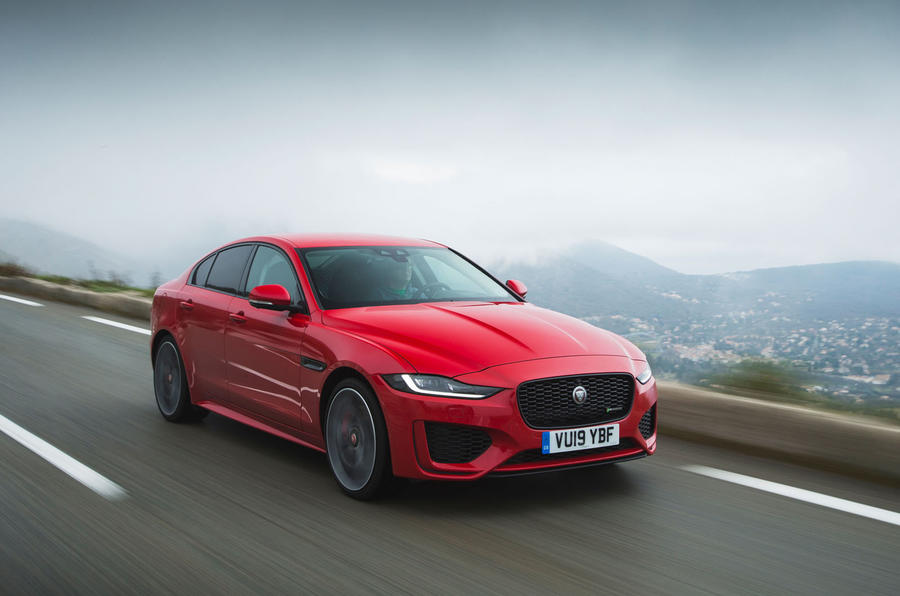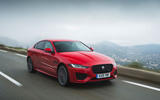What is it?
Jaguar is a car maker so instinctively associated with saloons that it’s near impossible to imagine a future for the firm without them; and yet I bet there are plenty of product strategists at the company’s UK headquarters right now who are being paid to do exactly that.
Right now, Jaguar’s more traditional executive four-doors just aren’t doing enough business – and with pressure mounting on the firm to cut costs and only to back winners, the worry must be that the current Jaguar XE, Jaguar XF and Jaguar XJ may never hit the sales heights necessary for all of them to be worth a place in a rationalized, revitalised range of future models.
And so for the maker of the original XJ and mkII of the 1960s, both celebrated, formative, world-class four-doors of their day, the great modern saloon-car gamble by which it dared to square up to its German opponents is looking increasingly at risk of being declared a dead loss. The XJ barely managed 5000 units last year. When the XE was launched in 2015, it was notable that chief among the saloons whose sales it stole was its bigger brother – the XF. Global production of XF and XE both only narrowly made it beyond 30,000 units in 2018. None of it makes particularly heartening reading.
So what new success can Gaydon’s 2020-model-year XE bring to the table, to prove perhaps that the company’s latest confident swing at the compact executive saloon market wasn’t such a misguided one? Well, to be fair, it needn’t sell like a Mercedes C-Class (nearly 400,000 units in 2018, since we’re counting). Another couple of 50,000-unit years, however unlikely that outcome may look now, would probably earn it a reprieve from the chop. And perhaps with that kind of achievable success in mind, Jaguar’s mid-life update for the car looks like a very carefully considered and targeted one.
The most important constituent part of that update may yet prove to be a revised 2.0-litre, 178bhp Ingenium diesel engine with European ‘RDE2’ diesel NOx emissions certification, which means that – for a while, at least – the all-important diesel XE will dodge the four percent company car tax penalty generally imposed on diesel fleet cars, and which its rivals currently all fall foul of.
Styling changes to the exterior are limited to headlights and bumpers. That’s because it’s the XE’s interior that has occupied the lion’s share of Jaguar’s facelift budget and attention – and rightly so, since it was probably the pre-facelift car’s biggest weakness.



































































Join the debate
Add your comment
Price
I went on to the Jag website in order to configure one of these. I thought it was very expensive for what it is. Interestingly, according to the website, the 200bhp version was not mentioned. Still many extras required to spec it up (imitating the Germans!).
Clearly made to battle the giulia
After driving and test driving this whole set of cars- BMW 330i, Audi S4, Jag XE, I plumped for the Alfa Giulia Veloce. It leaves all of these for dead in the driving stakes- seriously. Of all of them, the jag felt the most leaden, heavy and dull. Felt nice, looked great, but felt like a transit in comparison. The BMW was good, but not many superlatives you'd add. The Audi was solid and felt quick but there's so many of the german cars that I wanted Jag or Alfa.
The Alfa has definitely got under the skin of JLR as they've spent millions on the crazy "road (ish) legal" verson to get the N Ring record and now this, matching in every way the giulia veloce. However a drive of both will leave you going for the italian I'm sure.
Interestingly
No Hybrid!!!
A missed opportunity. One third of sales of the OLD BMW 3-series were hybrids; do Jaguar take no notice of the outside world?
The WLTP figures will surely rule this car out for most company car users.
Also, this model is £2K MORE than the new 330iM-Sport....
More powerful
Looking at BMW's website, the 330i is a 250 PS car. The XE with 250 PS starts at £34k. Perhaps I just can't use a web configurator. It has been known.....
NavalReserve wrote:
And despite the confusing name the "30" of 330 has no relevance whatsover, its still a 2.0litre 4 cylinder turbo, same as the XE, whats really sad is that the 330D has more power than the 330i, and the 320D has more power than the 320i